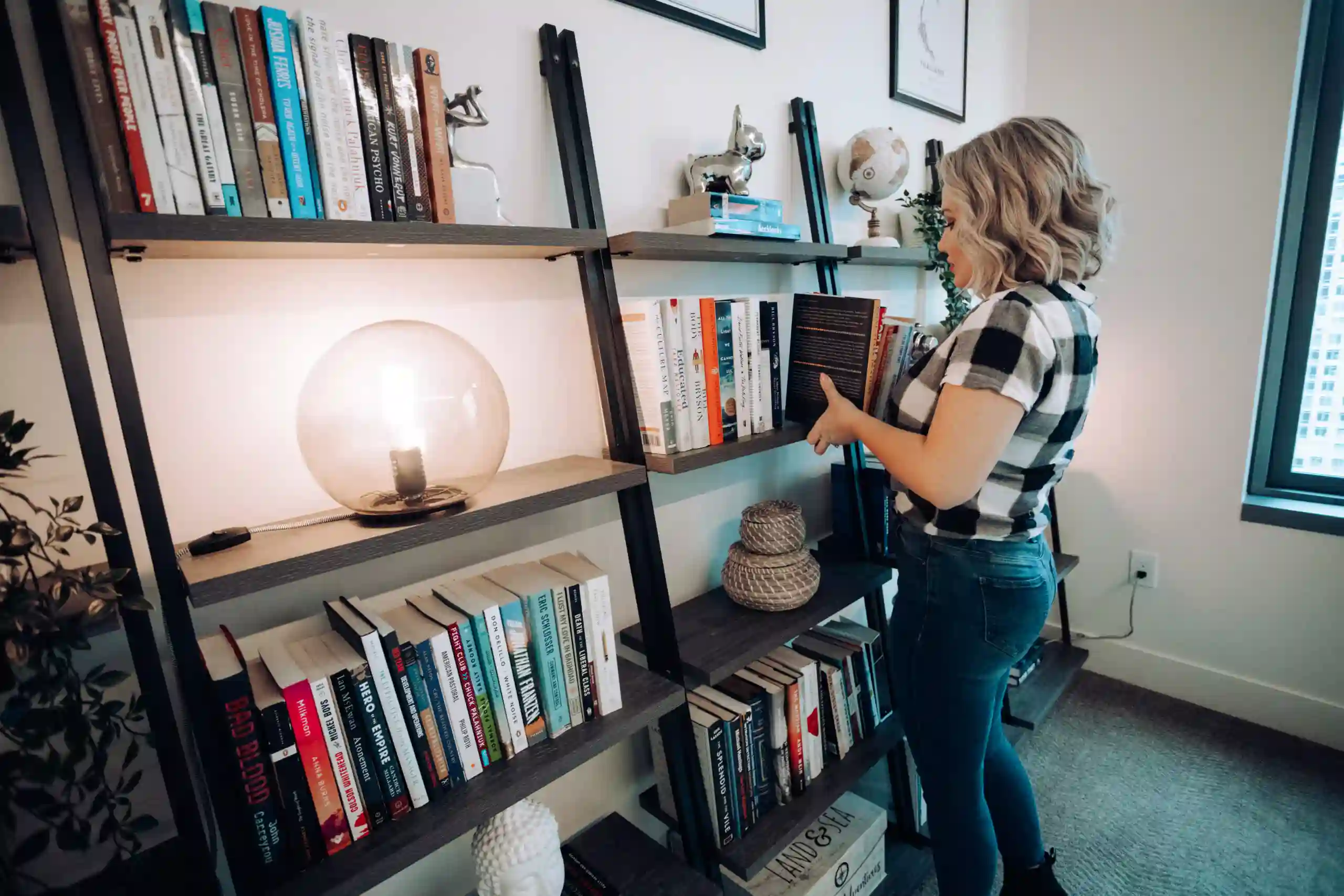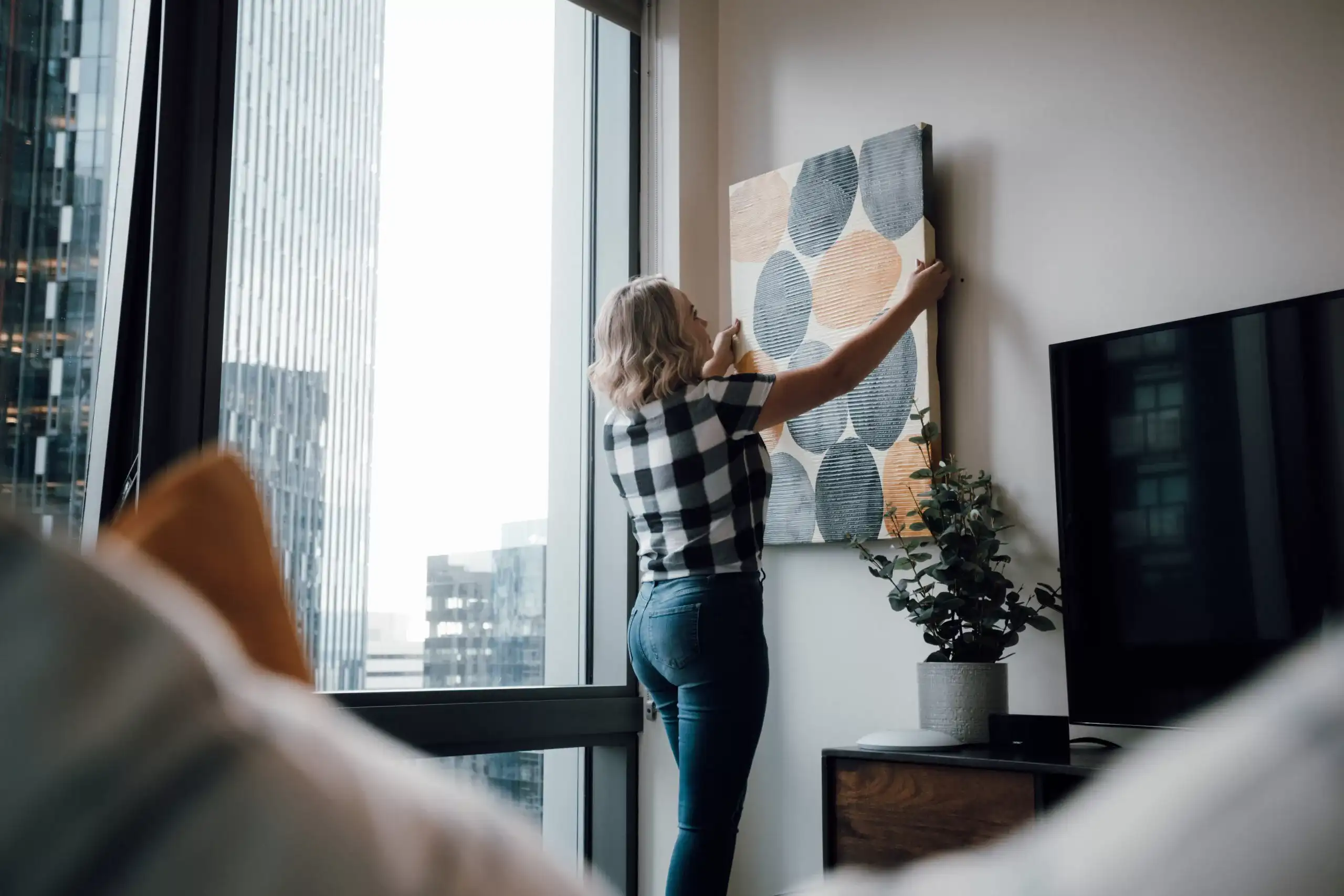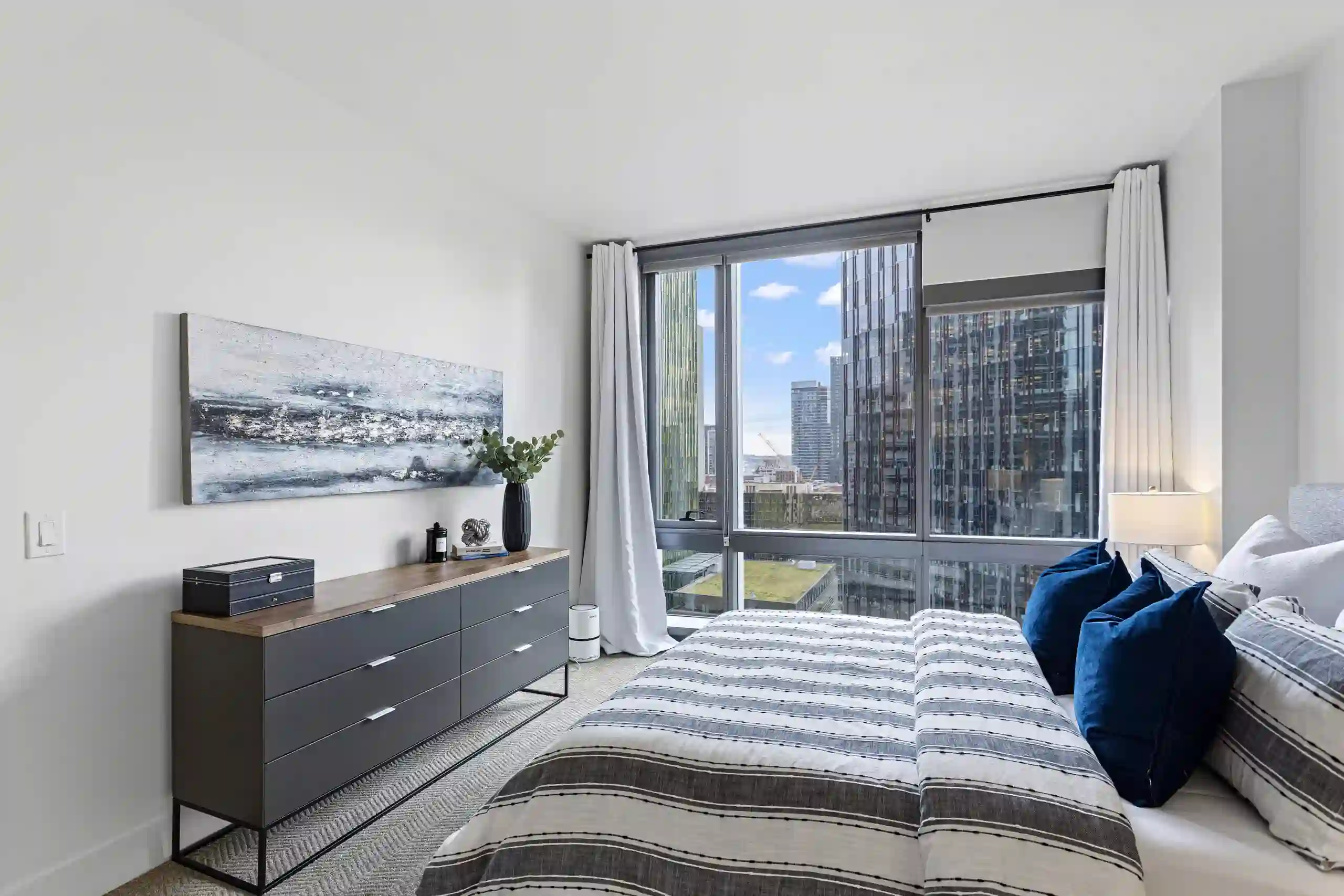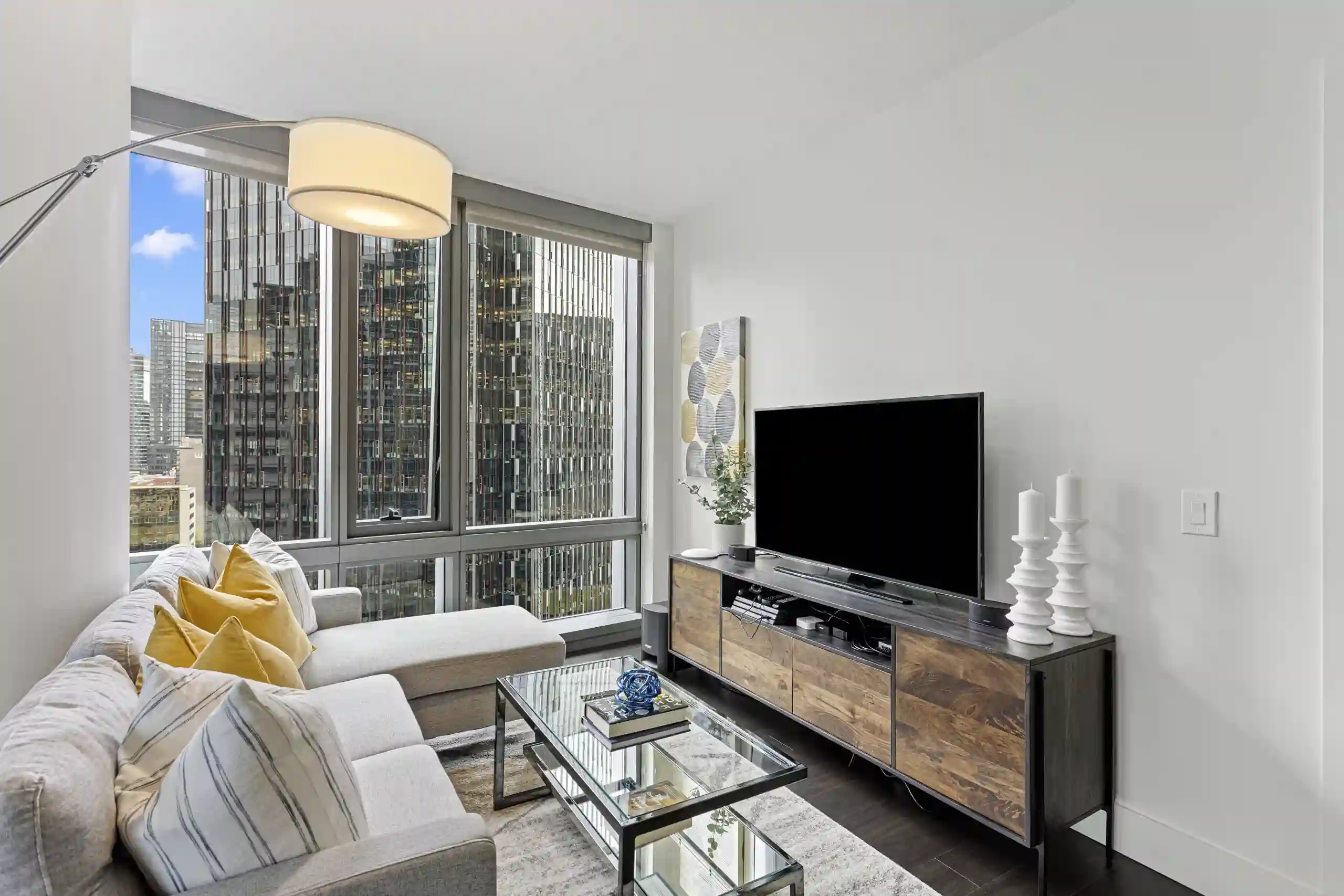Unlocking the Buyer’s Mind: The Psychological Power of Home Staging
Home staging is more than just arranging furniture. It is a strategic endeavor to evoke emotion and connection in potential buyers. By harnessing principles of psychology, home staging transforms spaces into inviting narratives that resonate with buyers on the subconscious level.
From warm lighting to strategically placed mirrors that amplify space, each element is carefully curated to create a harmonious ambiance that beckons visitors to envision themselves living within the space.
Colors, textures, and even scents trigger positive emotions and associations, fostering a sense of comfort and belonging. The arrangement of furniture and decor guides the eye smoothly through each room, emphasizing functionality and flow. Moreover, a well-staged home showcases its potential and instills a sense of urgency, prompting buyers to act decisively.
Read on to explore how home staging transforms empty spaces into inviting sanctuaries, igniting the imagination and prompting buyers to envision themselves living in the property.
Beyond Aesthetics: Understanding the Emotional Psychology of Home Staging

Selling a home involves more than simply listing it and waiting. It’s about fostering an emotional connection that resonates with potential buyers, a task where the subtle art of home staging shines. Beyond the meticulously arranged furniture and captivating decor lies a profound grasp of psychology. Home stagers deftly wield this knowledge to influence buyer perception on a subconscious level subtly.
Let’s dive into the intriguing psychological tactics employed in home staging. Discover how these strategies can wield a significant impact in the real estate arena, shaping buyer impressions and driving successful sales.
Unlocking Success: The Power of First Impressions
The power of first impressions is undeniable, especially in real estate. Research shows that potential buyers form opinions within seconds of entering a property, and these initial impressions heavily influence their decision-making process. When they look at a home, buyers subconsciously evaluate its appeal, imagine themselves living there, and assess its value.
In-home staging, the significance of first impressions is magnified. Every aspect of staging, from curb appeal to interior design, is meticulously crafted to create an immediate and positive impact.
By prioritizing aesthetics, cleanliness, and functionality, sellers can effectively capture buyers’ attention and instill a sense of desirability from the outset. In essence, the power of first impressions sets the stage for a successful sale, laying the groundwork for a lasting emotional connection between buyers and the property.
Crafting Connections Through Emotion
In the realm of real estate, the ability to evoke emotion is a powerful tool for creating a lasting connection between buyers and a property. Home staging goes beyond mere aesthetics; it’s about orchestrating an experience that resonates with potential buyers on a deeper level.
By infusing spaces with warmth, personality, and a sense of possibility, staging invites buyers to envision themselves living in the home, fostering an emotional attachment from the beginning.
Whether through cozy seating arrangements, inviting lighting, or thoughtful decor accents, every element is strategically chosen to elicit a specific emotional response. In doing so, staging transforms a house into a home, forging a meaningful connection that can ultimately lead to a successful sale.
Understanding Subconscious Influence
The subconscious influence in real estate, mainly through home staging, is fascinating. While buyers may not consciously recognize it, every aspect of a staged property is a carefully selected design that will impact their perceptions and decisions.
From the colors chosen to the furniture layout, each element subtly communicates messages that resonate subconsciously. By leveraging psychological principles such as familiarity, social proof, and emotional resonance, staging creates an environment that feels comfortable, desirable, and ultimately irresistible to potential buyers.
This subconscious influence plays a crucial role in shaping buyers’ perception of a property, guiding their emotions and thoughts toward a positive outcome. Home staging harnesses the power of the subconscious mind to create a compelling narrative that leads to successful sales.
Mastering Color Psychology in Home Staging
The importance of color in a home setting cannot be emphasized enough. It’s not merely about aesthetic appeal; color is vital for eliciting emotions and establishing the ideal ambiance for potential buyers. Understanding the psychology of color is paramount, as it is a potent tool in shaping buyer perception and accelerating the sale of your home at a premium price.
Next, we will dive into the captivating realm of color psychology in home staging. Join us as we uncover valuable insights into selecting the perfect palette to elevate your home’s allure and leave a lasting impression on prospective buyers.
How Colors Shape Emotional Responses
The impact of color on emotions is profound and well-documented, making it a critical consideration in home staging. Different hues can evoke various feelings, influencing potential buyers’ perceptions of a property.
Warm colors like reds and oranges can stimulate energy and excitement, creating a lively atmosphere in living areas or dining spaces. In contrast, cool tones such as blues and greens promote calmness and relaxation, making them ideal for bedrooms or bathrooms. Neutral shades like beige and grey provide balance and versatility, allowing buyers to envision their style.
By strategically incorporating colors that resonate with positive emotions, home stagers can create an inviting and emotionally engaging environment that resonates with buyers, ultimately enhancing the appeal and saleability of the property.
Creating Harmony Through Palettes
Creating harmony with color palettes is essential in home staging to evoke the right emotions and enhance the appeal of a property. As a home stager, your role in selecting complementary colors is crucial.
A well-balanced color scheme can create a sense of cohesion and flow throughout the space, making it more visually pleasing to potential buyers. By selecting colors that complement each other and the existing decor, you can establish a harmonious atmosphere that feels inviting and comfortable.
Incorporating a mix of neutrals with pops of accent colors can add interest and depth to the design while maintaining a sense of unity.
Additionally, considering the architectural features and natural lighting can help determine the most appropriate color palettes for every room. Ultimately, your choices in creating harmony with color palettes contribute to a cohesive and memorable staging experience that resonates with buyers.
The Role of Home Staging in Buyer Perception

In the intricate process of selling your home, the importance of a compelling first impression is crucial. As potential buyers cross the threshold, their initial assessments shape their entire perception of the property. This first impression underscores the vital role of home staging. Far beyond arranging furniture and décor, home staging represents a strategic endeavor to craft an environment that immediately captivates and resonates with potential buyers.
This section explores the profound impact of home staging on buyer perception and underscores its indispensable role in the home-selling process.
Setting the Stage for Your Best Performance
Setting the stage for success in real estate involves meticulous attention to detail and strategic planning. Home staging plays a crucial role in this process, as it helps highlight a property’s best features while minimizing any potential drawbacks.
By carefully arranging furniture, optimizing lighting, and adding tasteful decor, home stagers create an atmosphere that appeals to potential buyers’ emotions and aspirations. This attention to detail can make all the difference in how a property is perceived and can significantly impact its marketability and selling price.
Ultimately, setting the stage for success requires a combination of creativity, expertise, and an understanding of buyer psychology to ensure that a property stands out in a competitive market and attracts the right buyers.
The Depths of Psychological Impact
The psychological impact of home staging is profound in the world of real estate. Beyond aesthetics, staging harnesses the power of perception and emotion to influence buyer behavior.
Each design choice, from furniture arrangement to color palette, is strategically curated to evoke positive feelings and create a sense of connection with the space. By stimulating the imagination and highlighting the potential of a property, staging helps buyers envision themselves living there, fostering a deeper emotional attachment.
Moreover, staging can instill confidence in buyers, reassuring them of the property’s value and desirability. In addition, the psychological impact of home staging lies in its ability to shape perceptions, spark emotions, and ultimately drive purchasing decisions in a competitive market.
Unlocking Buyer Minds: The Psychological Power of Home Staging
The psychological power of home staging cannot be emphasized enough. Through strategic design choices and meticulous attention to detail, staging transforms properties into captivating spaces that resonate with potential buyers on an emotional level.
By leveraging the subconscious influence of color, layout, and decor, staging creates a compelling narrative that drives purchasing decisions and maximizes the appeal of a property.
As you embark on your real estate journey, remember the importance of setting the stage for success with professional home staging services. Contact our team at Brilliant Staging Seattle today to discover how our expertise can help you unlock your property’s full potential and achieve your selling goals.











